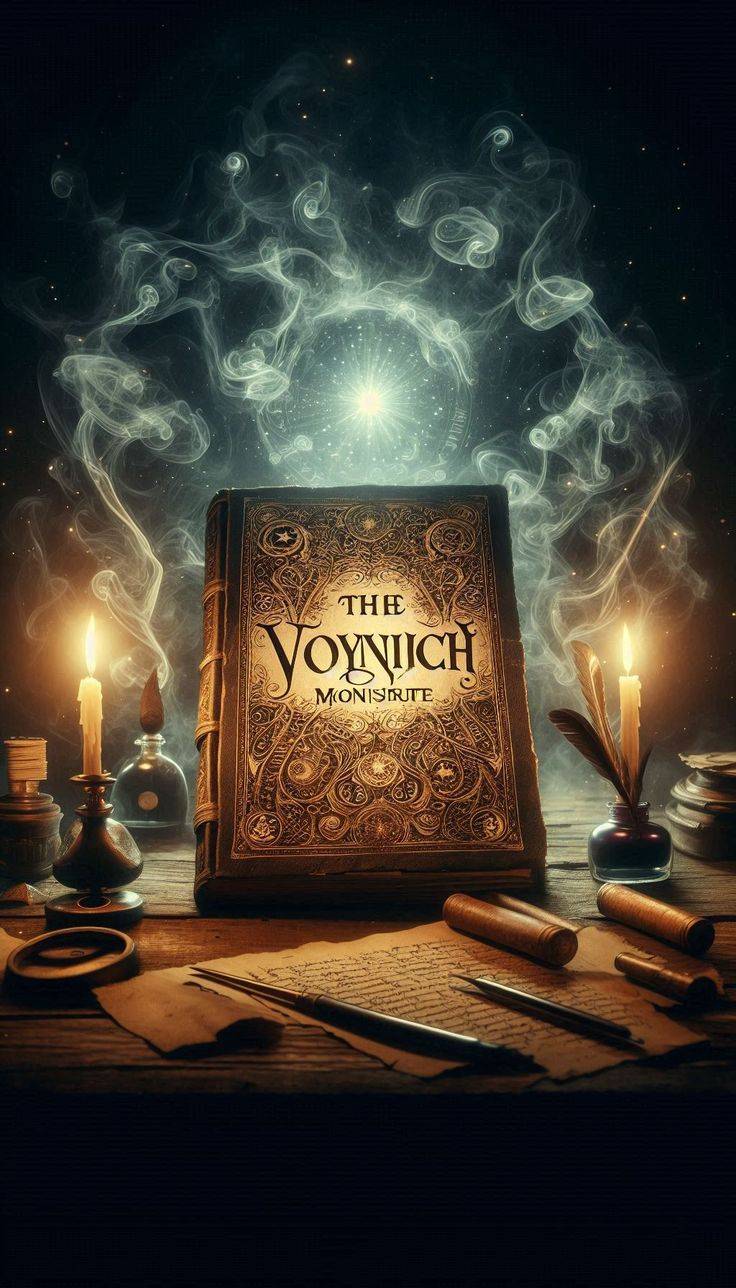Imagine stumbling across a book that’s small enough to fit in your hand, yet its secrets have stumped the brightest minds for over six centuries. Welcome to the world of the Voynich Manuscript, an artifact so perplexing it’s been dubbed everything from a divine message to a clever fake. Housed today in Yale University’s Beinecke Rare Book and Manuscript Library, this unassuming tome-about the size of a paperback—has sparked novels, inspired music, and even popped up as a hidden gem in video games. But what is it about this little book that keeps us hooked?
Flip through its 240 vellum pages, and you’ll find a script that flows like water, penned in a faded brown ink that no one can read. Surrounding the text are vivid, hand-painted illustrations: bizarre plants that don’t grow on Earth, naked figures bathing in mysterious pools, star charts that defy known constellations, and odd devices that look like they belong in a sci-fi tale. The manuscript is neatly divided into six sections-botanical, astrological, medicinal, cosmological, pharmaceutical, and recipes-each one brimming with curiosities. At over 600 years old, it’s ancient, sure, but age alone doesn’t explain its allure. Plenty of dusty old books sit forgotten in libraries worldwide without inspiring a single song. The Voynich Manuscript’s magic lies in its defiance: no one, from master codebreakers to armchair detectives, has ever cracked its code or unraveled its meaning.
The story begins with Wilfred Voynich, a man whose life reads like an adventure novel. Born in 1865 in what’s now Lithuania, then part of the Russian Empire, Voynich was a rebel with a cause. In his twenties, he landed in a Siberian prison for his revolutionary antics with a group called the Proletariat. Not one to be caged, he escaped, bartering his last decent clothes for a ticket to England. In London, he traded revolutionary fervor for a quieter life, marrying Ethel Boole-a former activist turned bestselling author-and settling into a career as an antiquarian bookseller. Fluent in 18 languages, Voynich had an eye for the rare and unusual, and in 1912, that eye led him to a jackpot.
While browsing the Villa Mondragone near Rome, a Jesuit-owned estate strapped for cash, Voynich scooped up 30 rare manuscripts. Among them was the peculiar book that now bears his name. He knew instantly it was special-old, odd, and unlike anything he’d seen. Its origins stretch back even further, possibly to Rudolf II, the Holy Roman Emperor in the late 16th century. A Habsburg with a chin to match his title, Rudolf was a quirky ruler who kept lions and tigers as pets (with predictably chaotic results) and chased the Philosopher’s Stone with the zeal of an alchemist. Legend says he paid a hefty sum-600 Venetian ducats, or roughly two kilograms of gold-for the manuscript, captivated by its strangeness.
From Rudolf, the book passed through a parade of fascinating figures: a doctor named Jacobus de Tepenec, whose faint signature glows under UV light; George Baresch, a Czech alchemist who puzzled over it for decades; and Athanasius Kircher, a 17th-century scholar famous for (incorrectly) claiming to decode Egyptian hieroglyphs. Kircher couldn’t crack it either, and the manuscript faded into obscurity, tucked away in a Roman college library until the 19th century, when it was rescued from confiscation and eventually landed in Voynich’s hands.
So, what’s in it? Theories abound. Some say it’s a cipher hiding profound secrets-maybe penned by the medieval genius Roger Bacon, as one early decoder, William Newbold, suggested. Newbold thought the text was gibberish concealing a Greek shorthand code, but his translations fell apart under scrutiny. Others, like William Friedman, a legendary cryptologist who broke Japan’s WWII codes, spent decades on it, only to conclude it might be a made-up language with no meaning at all. There’s even a whisper that Voynich himself faked it for profit, though that theory crumbles under modern science. Radiocarbon dating pegs the vellum to 1404-1438, and the inks match early 15th-century Europe-details Voynich couldn’t have faked in 1912, long before such tests existed.
The illustrations only deepen the mystery. The plants resemble nothing in any botanist’s guide, the people are oddly plump and often nude, and the diagrams hint at worlds beyond our own. Is it a lost herbal manual? A guide to alien flora? A madman’s doodles? Every few years, a new “solution†emerges-articles and videos proclaim the riddle solved-but the claims never hold up. Even AI took a swing in 2016 and struck out.
Perhaps that’s the real charm. The Voynich Manuscript endures as a tantalizing enigma, a puzzle that invites endless wonder without ever giving up its secrets. For now, it sits quietly at Yale, its pages whispering tales no one can hear-yet. Whether it’s a cosmic joke or a hidden treasure, one thing’s clear: this little book has a grip on our imagination that six centuries haven’t loosened.



